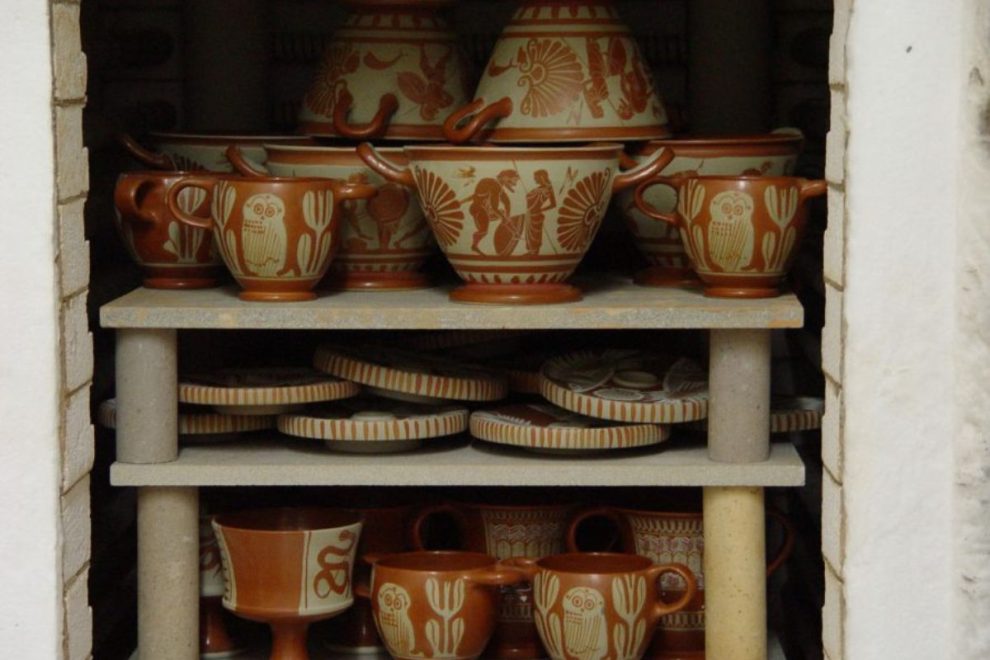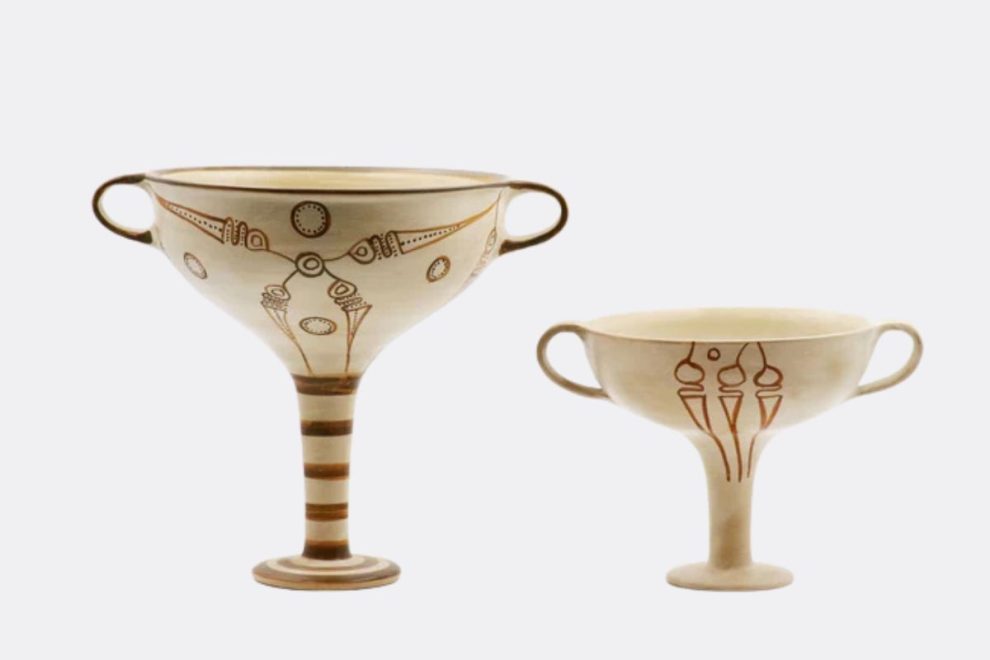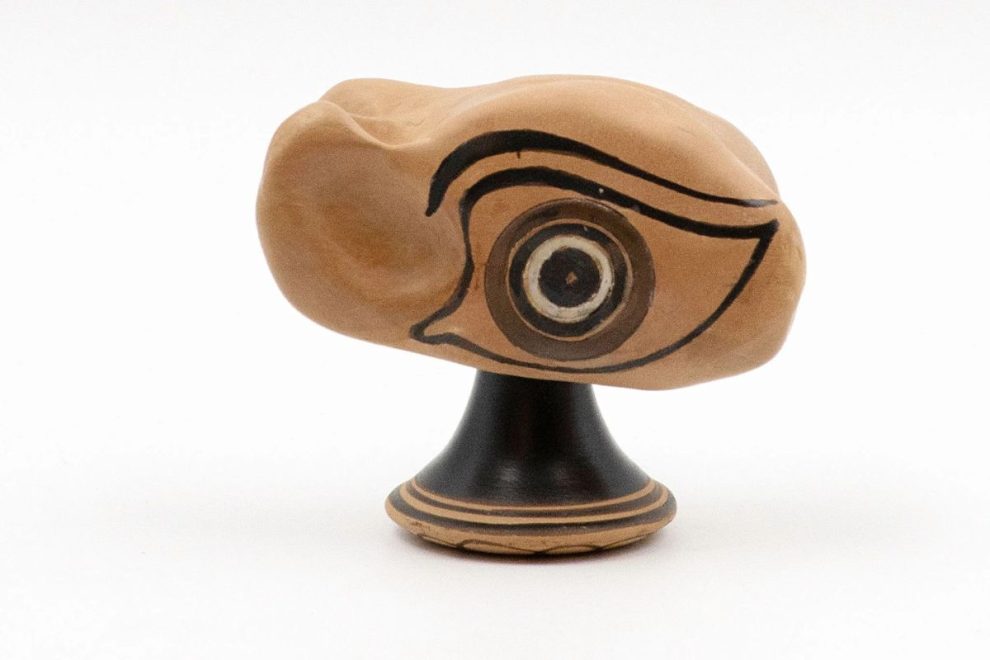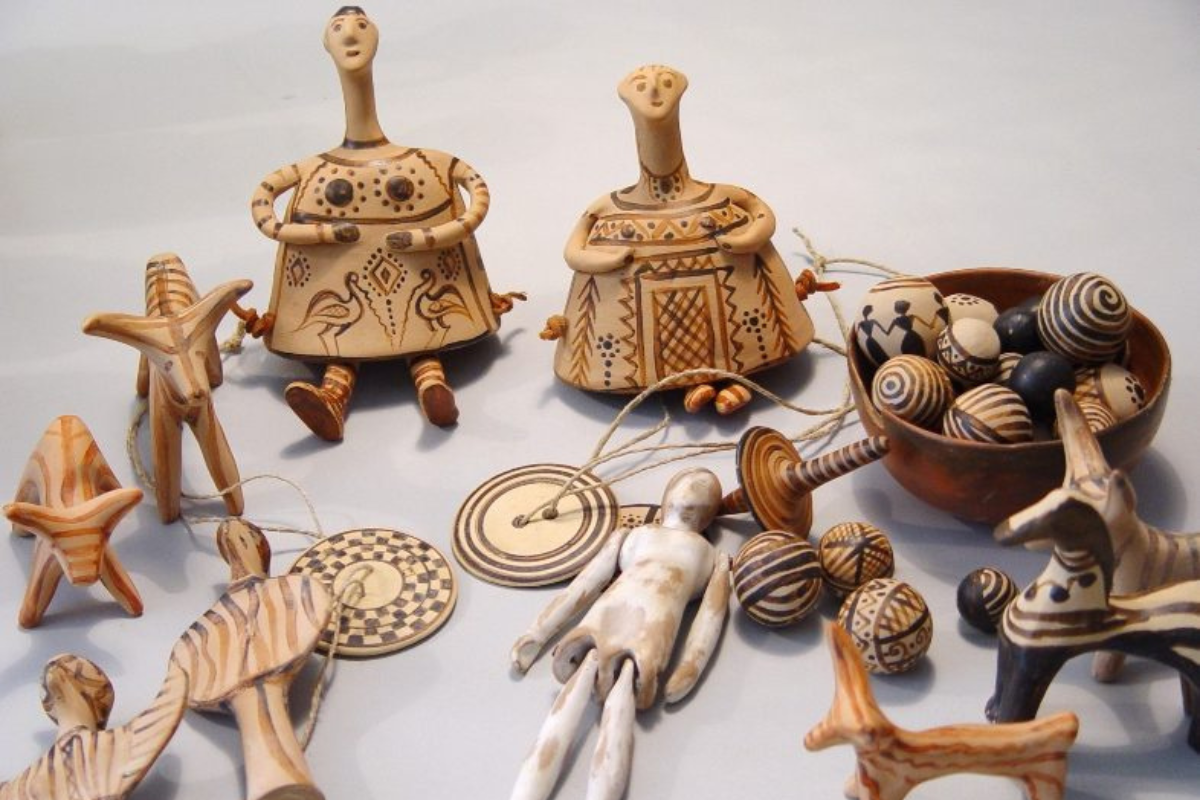
Attic pottery reveals ancient Greek life through its red- and black-figure storytelling designs.
Key Highlights
- Attic pottery, crafted in ancient Greece, is renowned for its deep orange color and exceptional craftsmanship, setting it apart from other Greek pottery traditions.
- The development of Attic pottery spans from the Geometric period through the Classical period, with major advances occurring between the 7th and 4th centuries BCE.
- Two defining techniques—black-figure and red-figure vase painting—originated in Athens and influenced pottery across the Mediterranean.
- Attic pottery depicted mythological scenes, daily life, and social customs, offering insight into ancient Greek society.
- Notable artists such as Exekias and the Berlin Painter contributed to Attic pottery’s legacy.
- Its distinctive visual motifs, use of iron-rich clay, and scenes of women’s roles continue to shape our understanding of ancient Greek culture.
Attic pottery is one of the most unique types of ancient Greek art. It comes from Attica, and this is where Athens sits at the center. People know this pottery well, mainly for attic red figure pottery and for the black-figure style. These methods turned simple pots into true works of art. The pottery was not only about making things people could use. These items show stories about myth, daily life, and how people lived in the Greek world. Because of this, they help us get what ancient Greek society was like. They also show how people in that time started to use art to tell stories.
Origins and Historical Context of Attic Pottery
Attic pottery started in Athens during the Archaic period, mainly in the 7th century BCE. This was an important time in the art and life of people. In the beginning, attic geometric pottery showed simple lines and shapes. These became the base for new styles that came later. What makes attic pottery stand out from other greek pottery in ancient greece is its iron-rich local clay. Artists also had better ways to paint and drew many scenes from Athenian life. This is why attic pottery became well-known all over ancient greece.
Early Beginnings in Athens
The story of Athenian vases starts right in the center of ancient Greek life. In the early Archaic period, people in Athens started to make a style of pottery called attic geometric pottery. It used strong lines and shapes that repeated. You can see that these early vases show how Athenian society became more complex. They also show that Athens had more contact with people from other places.
When Athens began to grow and be successful, its artists wanted to try new things. They changed the shapes and designs. They began to move past the simple geometric styles into making new and bigger stories on each pot. By the 7th century, the pottery workshops in Athens were making pieces that looked very different from those in other parts of Greece. This was because they used clay full of iron and tried new things all the time. That kept Athens at the front of pottery making.
Over the years, the people working in Athenian pottery shops did not stop looking for better ways to make things. Their work helped start the well-known black-figure and red-figure pottery styles. These would be a big part of attic pottery at its best.
Influence of Neighboring Regions
Attic pottery did not grow on its own. In the greek world, places like Laconia and Magna Graecia watched and reacted to what Athens was doing. The movement of pottery through trade routes took Athenian styles far from the city.
- Laconian styles, though respected, often used designs taken from Attic workshops.
- Pottery from Magna Graecia in southern italy showed both what local people liked and how Attic pieces made an impact.
- Good trade connections helped Attic pottery get to markets all over the Mediterranean, like Etruria and the black sea area.
- You could see differences between regions, but the quality and storytelling in Attic pottery became a model others followed.
By using ideas from other places and making their own work better, Athenian potters played a big part in the growth of greek art.
Timeline: Archaic to Classical Periods
Attic pottery’s primary development spanned the Archaic and Classical periods, roughly the 7th to 4th centuries BCE. During this time, distinctive styles and techniques emerged, reflecting changes in society and artistic priorities.
| Period | Key Features & Developments |
| Geometric (8th–7th c. BCE) | Linear designs, meanders, and basic narrative scenes begin to appear. |
| Early Archaic (7th c. BCE) | Introduction of figurative art, more complex vessel forms, and local clay. |
| Late Archaic (6th c. BCE) | Mastery of black-figure technique; mythological themes dominate. |
| Early Classical (5th c. BCE) | Transition to red-figure pottery, greater realism in human figures, expanded exports. |
| Late Classical (4th c. BCE) | Refinement of red-figure style, focus on elegance and detailed narrative scenes. |
This evolution reflects both Athenian innovation and the dynamic history of Greek pottery.
The Evolution of Attic Pottery
The story of attic pottery is full of changes in style. At first, there was attic geometric pottery. Later, artists began to use the black-figure technique during the 6th century BCE. After that, attic red figure pottery changed the way people did pottery painting. This new method made stories on vases much easier to tell in detail. Each step—geometric, black-figure, and red-figure—brought new ways to make designs and show what was happening in the art. These changes show how ancient Greek culture and the work of Athenian craftsmen grew over time.
Attic Black Figure Pottery
During the 6th century BCE, black-figure pottery started to be the main style in Athens. Artists would paint on vases using a shiny black layer on the red clay. They used sharp tools to make fine lines and details. This method helped them make clear and bold pictures that showed mythological themes and everyday life.
The key scenes on these vases often showed gods, heroes, and big stories from legend, like the Trojan War. The black-figure style needed vase painters to be skilled, with some getting famous for how they worked. Exekias is one of these well-known artists. He was known for his strong storytelling and the feelings in his art.
This black-figure way of painting did not stay only in Athens. It spread to the whole Greek world and changed how pottery looked for many years. But, near the end of the 6th century BCE, another style called red-figure took over.
Attic Red Figure Pottery
Late in the 6th century BCE, Attic potters started using the red-figure method in vase painting. This changed Greek vase painting in a big way. Before, artists would paint the figures in black and leave the background the color of the clay. With the red-figure technique, artists reversed it: figures kept the natural color of the clay, and the background was painted black.
This new way made it easier for artists to show the body and how it moves with more detail and look more real. Now, they could use thin brushes for the small parts instead of just scratching the picture into the vase. It let people show scenes like sports events, small meetings, or even old stories from myths.
Because this method gave more freedom and looked so striking, red-figure pottery quickly took over black-figure vases in Athens and also spread to other places. It became most popular in the 5th century BCE, which was Athens’ classical period. This shows how the city kept showing its great skill in art with each new year.
Attic Geometric Pottery
The earliest phase of attic pottery started in the 8th century BCE. In this time, artists used geometric patterns and very neat designs. The designs often had meanders, zigzags, and circles drawn inside each other. These patterns were used to decorate big funerary vessels and other kinds of vases.
Attic geometric pottery began a new Athenian way of telling stories through art. People sometimes added humans and animals to the artwork. But they showed them in simple shapes, not very real, because the time was more about order and repeating patterns.
After some years, attic pottery styles moved toward looking more natural and telling stories. But even then, people could still see geometric patterns from the early phase in later pottery. These early designs were always important and helped artists make even better things later. This early phase made Athens a major place for creative work in the ancient Greek world.
The early phase of attic geometric pottery is a key part of ancient greek history. It marks the start of many changes in art that would shape the greek world for a long time.
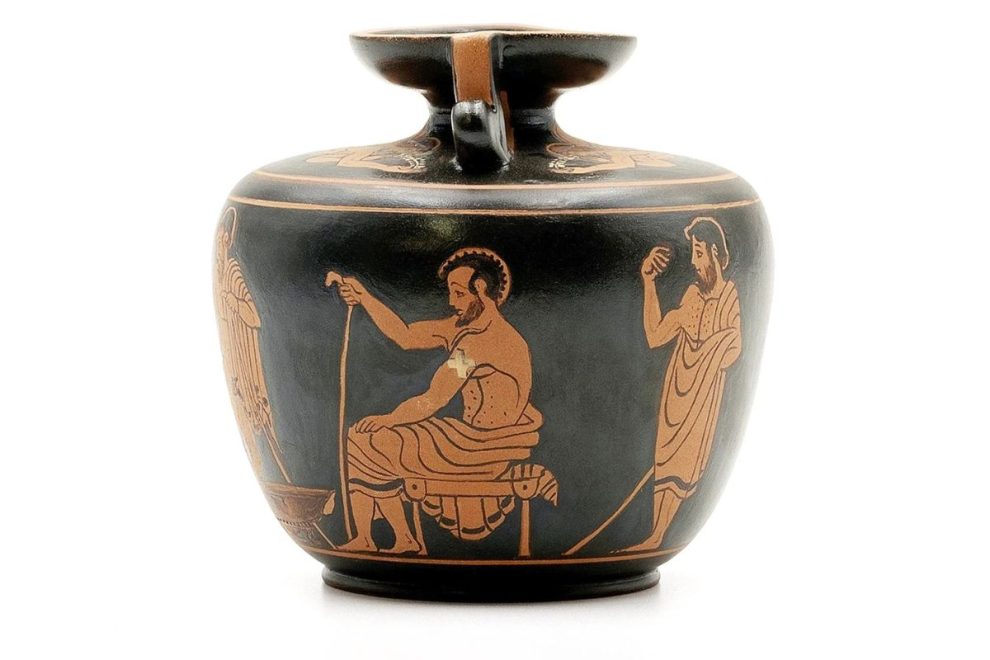
Key Characteristics of Attic Pottery
Attic pottery is known for being one of the best types of ancient Greek pottery. You can spot it right away because of its bright orange-red color and its shiny black glaze. The people who made Attic pottery used very good clay. They always showed great skill when they made or painted these vessels. The way they painted changed over time, but every piece showed careful work and clear lines. Artists often added detailed designs and stories to the pottery. Because of these things, Attic pottery became the main type of greek pottery that people liked in ancient Greek times. It was not just wanted in Greece, but people outside the area wanted it too.
Visual Styles and Motifs
Distinct visual styles and special designs make Attic pottery stand out from other ancient Greek traditions. In this type of greek art, artists often put scenes on their pottery that told stories from myths and showed different designs. These pots mix art with real storytelling.
- Many mythological stories, like the Trojan War, were shown. They often had gods and heroes doing big and dramatic things.
- Black-figure pots stood out with strong shapes and lines, plus small details scratched in and bits of color added on.
- Red-figure pottery made the lines look smoother. It also paid more attention to how people’s bodies and faces looked and showed more feeling.
- Floral patterns and vines were common for borders or to frame pictures.
- Geometric shapes and patterns, carried over from older styles, were still used to dress up a lot of pots.
Each design had a reason for being there. Some showed what the pot would be used for, and some showed what was important to people in Athens. The way Attic pottery fit so much meaning and detail into each piece is what made it special in ancient Greek art.
Shapes and Forms Used
The shape and style of Attic pottery mattered for more than how it looked. The way each piece was made was important for how people used it in ancient Greek life and what it meant. Potters in Athens came up with many different vase shapes for work in homes, religious ceremonies, and even funerals.
- Amphorae: These are big jars with two handles. People used them to store things like olive oil and some other goods.
- Kylix: These are cups that are not deep. People at parties called symposiums used them for drinking. Many had a painting on the inside (in the middle part called the tondo).
- Hydria: This is a water jar with three handles. It was made for easy carrying and pouring.
- Lekythos: This is a skinny flask for oil. It was often left at graves as part of funerary custom.
There were also other shapes like kraters for mixing drinks, oinochoe for pouring wine, and loutrophoroi for use at weddings and burials. Every different type of vase shape, with its own looks and styles, shows the many uses of pottery in ancient Greek daily and ceremonial life. The look of each vessel matches the role it played, both for use and for meaning, in the world they lived in.
Clay and Materials
The main feature of Attic pottery comes from the special attic clay found around Athens. This clay is rich in iron. Because of this, the clay gets a deep red-orange color, which helps people spot Attic wares easily. Potters took care to prepare the clay. They removed anything that should not be there. This gave them a fine, smooth clay to work with.
A stand-out part of Attic pottery was its black glaze. Potters created this glaze with a three-step kiln firing method. How well the pot turned out depended on how the potter handled this part of the process. The pot would look better and last longer if the potter got it right. People saw Attic pottery as being made from the highest quality materials. This made these pots valuable both in Greece and also in other places.
How potters handled the materials was very important. For Athenian workshops, this was not just about skill but also about pride. They wanted to make pottery that fit the city’s high standards for beauty and use.
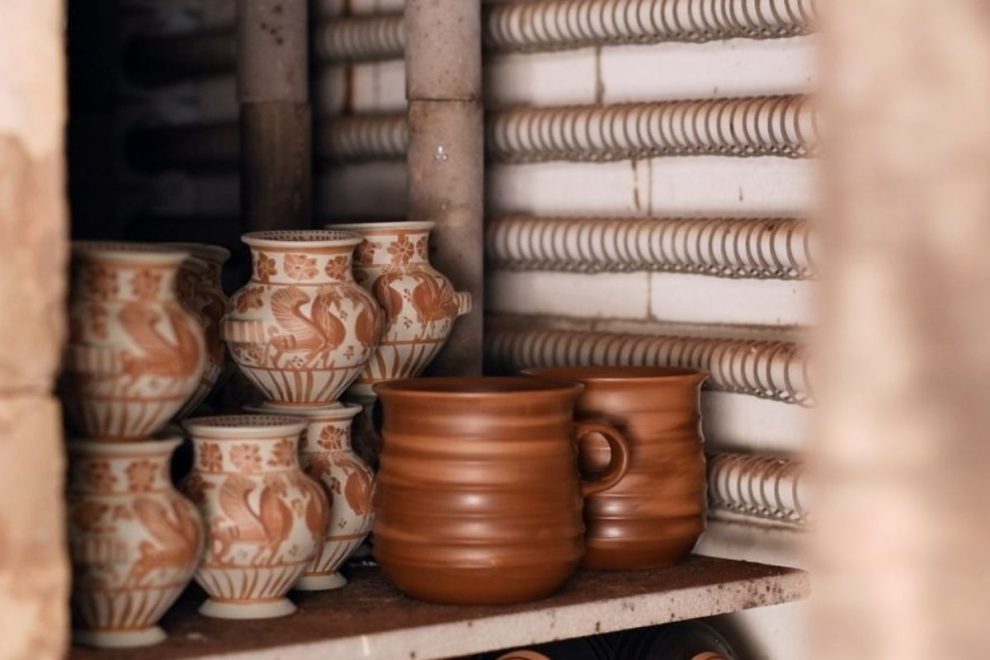
Production Techniques and Workshop Practices
Production of Attic pottery in the ancient world used skilled technique, planning, and shared work. Potters would shape the vessels on a wheel. Kiln firing made sure each piece was strong and lasted a long time. In the workshops, jobs were split between potters, vase painters, and helpers. Each person had their own part to do during the process. To understand true Attic pottery, you need to look at signs like the look of the clay and marks made by each artist or workshop. These methods helped Attic pottery stand out from copies and other types made in different places.
Potter’s Wheel and Kiln Firing
Attic pottery was made using a potter’s wheel. This tool helped workers shape smooth and even pots. After this, the pots had to go through a detailed process in the kiln. The three-stage firing is what gave Attic pottery its famous deep black glaze.
At first, the pot was heated with a lot of oxygen, so it turned red all over. Next, they closed the kiln. Air could not get in, and this made the black slip turn shiny and black. In the last step, they let oxygen back into the kiln. The uncovered clay turned its natural color again, but the black-glazed spots stayed black.
This way needed skill and close attention. If someone made even a small mistake, the pottery could crack or the shine could go wrong. True Attic pottery has a clear red-orange clay and black glaze. This only comes from their special method and makes them easy to spot. It is hard for people outside the area to copy them well.
Division of Labor in Workshops
Pottery workshops in Athens worked well because people there helped each other and this made everything run smoothly. The work was split in a clear way. For example, potters would shape the pots, and vase painters would draw and paint on them. Some workers were masters who watched over the job. Other people had different roles, like metics, apprentices, freed, and enslaved people. They all helped at many steps.
Vase painters were sometimes not in the same workshop as the potters. They could choose to take jobs from different workshops. This way, vase painters could spread new ideas and make their art styles noticed in the ancient world. People did not always sign the pots. Even so, the way they drew and painted let others see which artist or workshop made which piece. Old experts like Giovanni Morelli and Sir John Beazley talked about this.
All this working together started new ideas and kept the work steady. When good skill mixed with great new ideas, it made Attic or greek pottery stand out for other people in the ancient world. These workshops helped Athens become the main place for greek pottery. Athens then led the way for many years in that market.
Signature Markings and Inscriptions
Authentic Attic pottery often has special marks and writing on it. These can help people understand where it came from and who made it. Some of these pots have the names of the potter, often marked with “epoiesen,” and the painter, marked with “egraphsen.” This shows who did what to make the pot.
Not every Attic pottery piece has a name on it. But people can sometimes still guess which artist or workshop made it. They do this by looking at its style. Sir John Beazley was an art historian who used these hints to group Attic vase painters and see how their art changed over time. It’s a lot like looking at how someone’s handwriting changes.
These writings make Attic pottery easier to tell apart from copies or pots made in other towns. If there are names, marks from workshops, or short messages, they make each vase more important. These things show us how the people in Athens worked together and took pride in their pottery making. This is why studying attic vase painters is so helpful.
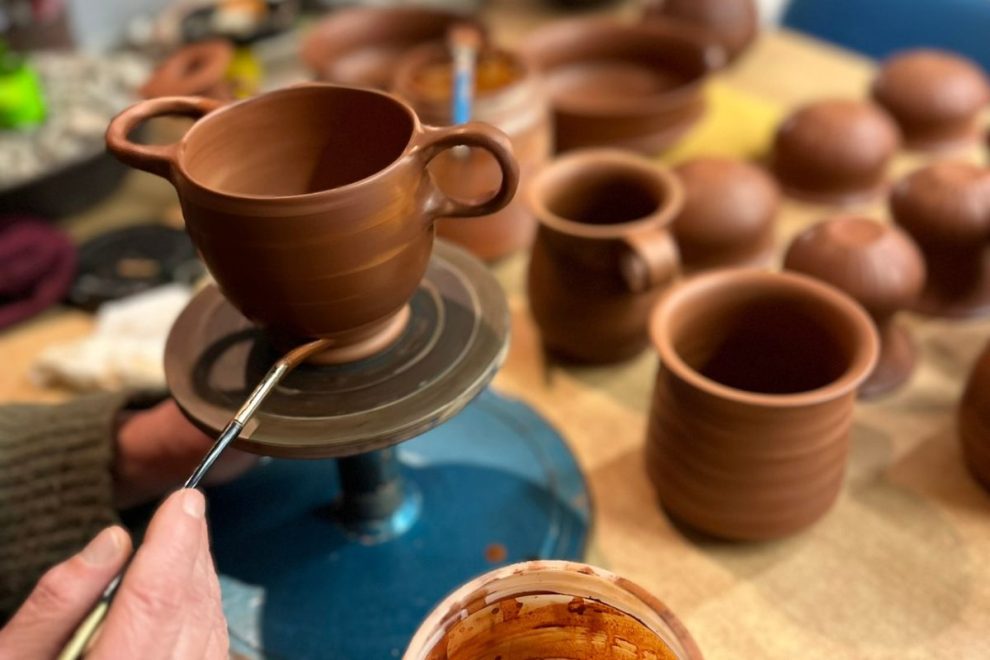
Famous Greek Potters and Workshops
Attic pottery became the best it could be because of the work of special artists and their workshops. Well-known vase painters like Exekias (black-figure), the Andokides Painter (who started red-figure style), the Berlin Painter (high classical), and the Achilles Painter (who brought late classical style) raised the bar for style and storytelling. These vase painters and their workshops made a big mark on ancient Greek art. Their work, found in museums and places all around the world, still shows the skill and ideas of greek art from Athens and beyond. This is why their names and styles are still famous today.
Exekias: Master of Black-Figure
Exekias is known as one of the best artists in ancient Greek vase painting. He lived in the 6th century BCE and was famous for using the black-figure style in Attic pottery. He was very good at using black slip and making fine lines to show strong feelings in his art. Many of his vases show important mythological scenes, such as stories from the Trojan War. His work is known for having a lot of detail and very good balance.
Exekias was not just a painter. He was also a skilled potter, and some of his pieces even have his name on them as both the painter and the potter. He was great at telling stories with his work and showing feelings on the faces of people. Dr. John Boardman once said that Exekias made storytelling important, and each vase showed a small piece of Greek myth.
His works are still looked at a lot today and many people admire them. These pieces are some of the best examples of ancient Greek black-figure pottery. This is why Exekias is known as a master of Greek art.
The Andokides Painter and Red-Figure Development
The Andokides Painter was the first to use the red-figure way of painting around 530 BCE. This change was very important in Attic pottery. It made it possible to show more detail, realness, and movement when painting human figures. The Andokides Painter tried both black-figure and red-figure styles, and he made “bilingual” vases to show how the new way was better.
He painted stories about myth and scenes from daily life in ancient Greece. He used lines that moved more freely, and he showed people and things from many points of view, which people could not do before. By painting small details with fine brushes and not just scratching onto the pot, he set up a new path for red-figure artists.
Because of what the Andokides Painter did, red-figure pots took over for a long time in Attic workshops. What he started became a big part of the look and style that people in ancient Greece knew for years.
The Berlin Painter and High Classical Style
The Berlin Painter is well-known for what he added to the high classical style of Attic red-figure pottery in the 5th century BCE. People remember him for his simple and good-looking designs. He liked to show either one person or a small group set against a plain, dark background. This helped people look at how the person stood or moved.
The vases he made come in different forms, like amphorae and lekythoi. You can see his clear and tidy lines, with simple decoration, in every piece. Many times, his art shows gods, athletes, or stories from myths in a way that feels real and natural. What the Berlin Painter did helped shape art during the classical period. He showed new ways to tell stories in pictures. His style also gave that time a higher bar for clear storytelling and for looking good.
Museums really value the works the Berlin Painter did, and people think they are great examples of skill and beauty. Art lovers and experts use his vases to help understand just how good Attic pottery was during the classical period.
The Achilles Painter and Late Classical Elegance
The Achilles Painter was a well-known artist in the late classical time of Attic pottery. He was active in the middle of the 5th century BCE. Many people know him for his soft, careful style and his great skill with the red-figure technique. You can see this skill on his vessels, especially lekythoi. These often show gentle scenes and smaller, quiet moments. He was able to capture small feelings from daily life, rituals, and myth events.
You will notice the Achilles Painter’s pieces have light and clean lines. He cared more about showing beauty than showing big, dramatic scenes. Most times, he painted funerary and home scenes. This gives us a look into what daily life and special ceremonies were like for people living in Athens. Ingeborg Scheibler said that, “The Achilles Painter’s art lies in understatement; his vases speak with gentle clarity.”
He helped shape fine pottery styles, and his work influenced people outside of Athens as well. The way he worked showed just how lasting and good Attic craftsmanship could be.
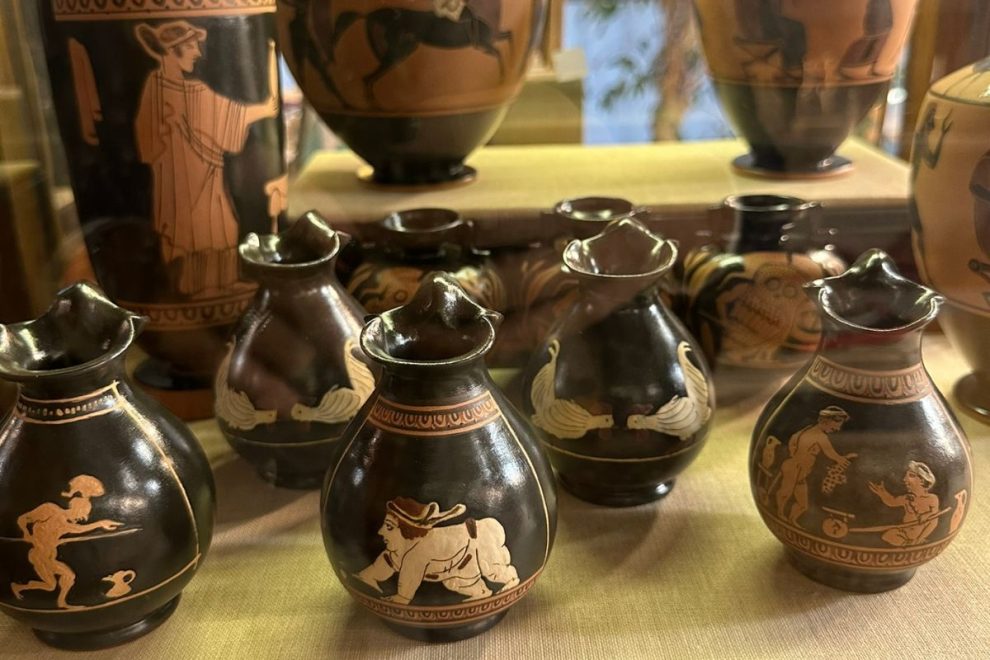
Representation and Symbolism on Attic Pottery
Attic pottery was a way for ancient Greek people to show what they believed in, how they lived each day, and what their customs were. The images on these pots—myths, women, and scenes from daily life—help us understand what was important to them, what they expected of people, and how they saw the world. Skilled hands painted these pictures with care. They show the many different roles people had and how society was ordered in ancient Athens. These pots highlight the roles of men and women, how people took part in religion, and why certain events, both with others and at home, mattered so much.
Mythological Narratives
Mythological themes can be seen in a lot of Attic pottery. Artists liked to choose stories that would speak to the people in that time. They often used scenes from the Trojan War, stories about the hard work of Herakles, and tales about gods and goddesses.
- Trojan War battles, showing fights like the one between Achilles and Hector.
- Herakles doing his brave deeds, often with Athena by his side.
- Dionysian parties with satyrs and maenads, honoring the god of wine.
- Meetings between normal people and gods, like the encounter of Perseus and Medusa.
- Olympian gods spending time with people or even fighting with each other.
Such scenes shared good lessons, showed off the best things in that culture, and helped connect everyday life of the people to the big stories of Greek mythology. The way people could see all these stories in detail made Attic pottery a strong way to share and keep their group identity and what they all believed in.
Daily Life and Social Customs
Beyond myth, Attic pottery often showed what daily life and social customs looked like in ancient Greece. Vase painters made pictures that showed things like athletic contests, group meals, and things people did at home. These pictures give modern historians key details about ancient Greek life.
Vessels that people used at gatherings called symposiums often had pictures of people enjoying music and celebrating together. This showed how important those social times were. Other items showed men at the gymnasia, which pointed to the value of strength and discipline in ancient Greek life. Many scenes on pottery showed women working. You could see them spinning, carrying water, or taking care of kids. This gave a look into how jobs and tasks were divided between men and women, and it showed the everyday beat of home life.
These images did more than just look nice. They showed what people in Athens expected from each other, and the dreams they had. The pottery recorded both public things and private moments, showing all kinds of ancient Greek life in a way that was simple for people to see and understand.
Depiction of Women and Their Roles
The way women are shown on Attic pottery gives us a clear look at the roles they had in ancient Greek life. You can see women in homes, working with wool, taking care of the house, and looking after children. This tells us how much their work at home mattered to the family and daily life.
We also see weddings and funerals on these pots. Women often take the main role in these important moments. Brides, mothers, and mourners are shown at the center of these events, with their clothes and actions showing the jobs and duties they had.
Most ancient Greek art came from a man’s view. Still, these pictures show that women were busy in social, religious, and business life, too. Pottery in Athens, made for people there or sent far away, often shows women at work. This means that even in a male-led world, the people of Athens wanted to remember and show the many important things that women did—in the home and also for the whole community.
Athletic Events and Public Festivals
Athletic contests and public festivals show up often on Attic pottery. This shows how important they were in ancient Greek society. Prize vases, like Panathenaic amphorae, were given to winners of things like chariot races, boxing, and wrestling. These vases were usually filled with valuable olive oil.
Many vases show athletes getting ready, competing, or celebrating, which shows what people thought about doing well in sports and feeling proud as a group. The Panathenaic Games, held to honor Athena, stood out the most. The amphorae from these games often show Athena herself with the people taking part.
Public festivals also included religious events, where people took part in processions, made offerings, and played music. These things show that rituals had an important place in public life. These scenes on pottery help us see both the fun and the deeper meaning of such gatherings in ancient Greek culture and give a picture of what brought Athenian people together.
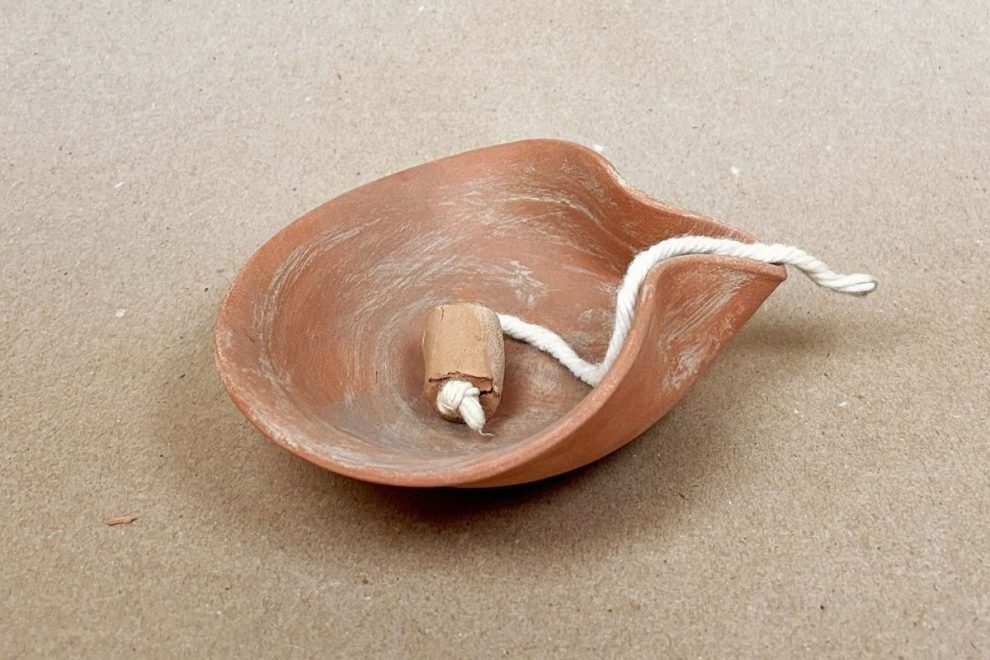
Function and Uses of Attic Pottery in Society
Attic pottery was important in the daily life and big events in ancient Greece. People in ancient Greek homes used these vessels to keep olive oil, wine, and food. These pieces were not just nice to look at—they had a real use every day. Pottery also played a big part in religious and funeral times. Some served as cups for drinking, while others, such as lekythoi, were used for funerals. This shows that pottery was a big part of both home life and public life in ancient Greece. It helped with everyday needs and had a special meaning, too.
Domestic Vessels for Food and Drink
In Athenian homes, Attic pottery was a big part of everyday life. People used large jars called amphorae to store things like olive oil, wine, and grain. These jars kept the food safe and fresh because they were strong and made in smart shapes. There was also the kylix. This was a wide cup used mainly for drinking at events. When people finished their drink, they could see painted pictures inside the cup.
Smaller containers, like lekythoi, held scented oils. People used these oils for personal care and in religious activities. The many different shapes of these pottery pieces show that people really understood what their houses needed. Each kind of vessel had one main job.
Pottery in ancient Greek times also showed if someone was rich or had good taste. Fancy decorated jars meant the owner had money and style. But even the simple pieces showed great skill. These things were there in all parts of life, showing that pottery was not only useful but also had a lot of value in ancient Greek culture.
Religious and Funerary Applications
In old times, attic pottery had a special use in ancient rituals. People made these vessels for funerary customs, and they were very important. Many jars were decorated with mythological themes and pictures of human figures, showing what the people believed about life after death. The black figure style was often used to show stories about daily life and values of the ancient Greeks on the pottery. This kind of art was also used in religious settings, like when people gave olive oil and other things as offerings to their gods. These well-designed ceramics found in burial sites show they were important in both daily life and spiritual ways, all through the 5th century BC and later.
Vases as Prizes and Diplomatic Gifts
In the ancient Greek world, vases were more than everyday things. They stood for style and were used in friendly give-and-take between people and places. Made with care and a lot of detail, these ancient greek vases were often given as prizes to people who won sporting events. This showed how much people there liked strong and skilled athletes. They were also given as special gifts to help bring city-states together and keep peace. The vase painting was detailed, and often showed mythological themes. This made the works of art even more special. Because of all this, these vases were not just beautiful. They also had a use. These works of art helped hold together people in the greek world and in other places around the Mediterranean.
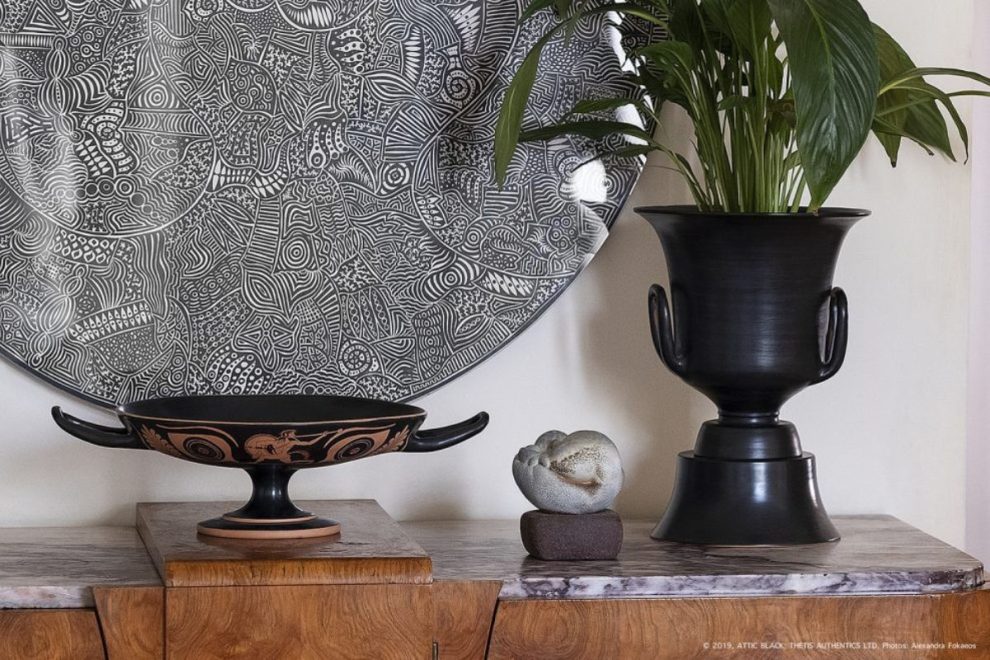
Distribution and Trade of Attic Pottery
The networks built in the ancient Greek time helped move attic pottery all over the Mediterranean world. Places such as Magna Graecia and the Black Sea area became important spots for trade. Athenian vases, with their black figure and red figure styles, were more than simple items used in everyday life. People outside Athens wanted them in their markets. These vases went through many trade routes and had an effect on pottery styles in other places. This shows how the ancient Greek world was closely linked together, and how Athenian work made a lasting mark on the look of pottery in different regions.
Major Export Destinations
Trade routes in the Mediterranean made it possible to export Attic vases to many big places in the ancient world. These vases were often sent to places like Southern Italy and the Black Sea area. Athens sent out its well-made greek pottery, and people wanted them because they liked how they looked and the good work put into them. Magna Graecia, for example, really liked these attic vases and used them in their daily routines and special events. Sending their vases out helped grow the local cultures in other places. It also let Athenian vase painters get known outside ancient Greece, as their styles and ideas reached new people and influenced art far away.
Impact on Local Markets Outside Athens
In ancient times, Athenian pottery reached far outside the city. Places such as Southern Italy and the Black Sea area began to use Athenian designs and ways of making pottery. This helped those markets form their own look and style. Because of this, local artwork in those areas changed a lot, mixing Greek and local methods. Finding attic pottery in other places did not mean people just traded things. It also played a role in sharing ideas and culture. These beautiful vases soon showed status and became a sign of good taste. They made daily life and talks between people in the Mediterranean world better and richer.
Trade Routes Across the Mediterranean
Large trade networks went across the Mediterranean. These routes helped move attic pottery between many cultures. Ships carried vases from ancient Greece to the shores of Magna Graecia and Southern Italy. These vases often showed mythological scenes, used the black figure style, and had designs that showed everyday life.
Athenian vases, in this busy trade, stood out as high-quality goods. They were wanted by people in many places. This movement of Greek art did more than spread beautiful things. It helped people from different places in the ancient world share and learn from each other, and that had a big effect on culture in those times.
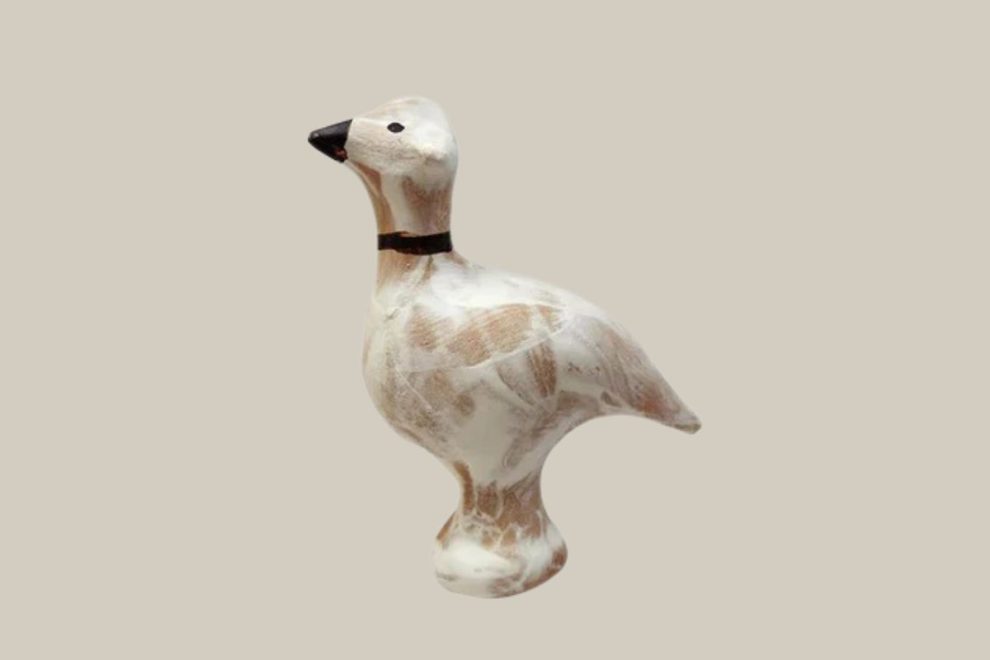
Attic Pottery Beyond Athens: Regional Influence
The reach of attic pottery went much farther than just its home city. It mixed with the styles and ways of life in the areas around it. This influence was easy to see with Laconian art, too. Laconian art brought some of the simple touches from Sparta together with the detailed work found in Athenian vases. In southern Italy and Etruria, local people making art looked to these styles. They put them into their own way of doing things but still kept the strong stories that Greek art is known for. These changes helped bring a joined way of making art across the mediterranean world. All of this shows how attic pottery did not just show what Athenian culture was. It also took in new things as it met other people, helping shape and be shaped by the different groups that made up the ancient world.
Interactions with Laconian Styles
The clear features of Laconian styles help people study ancient Greek pottery. The way Athenian and Laconian ceramic works mixed with each other shows how there was a flow of ideas, and also how vase painters chose to use local designs and ways of making things from the Peloponnesian area. This mix did more than just change the look of Attic pottery. It also showed bigger things going on in society and politics at the time. By looking at the art shared between regions, mostly in the 6th and 5th centuries BC, we can find out about daily life, stories of Greek myth, and what gave Greek art its growing style across the Mediterranean world.
Presence in Etruria and Southern Italy
Regions like Etruria and southern Italy show a strong touch of ancient Greek art, especially from Attic pottery. The people there liked to use Athenian styles in their own work. This led to a special mix of looks, mostly seen in vase painting. You can see this in things like the black figure technique and in pictures of mythological themes. These styles point to deep ties between the groups.
Attic vases were used every day, but they were not just simple things for use. They had value as prized objects and were often sold in local markets. This lifted the art and the artists to a higher place in the Mediterranean world.
Adoption and Adaptation in Other Greek Regions
The impact of attic pottery reached outside Athens. People in other Greek places started to use and change these well-known styles. In regions such as Magna Graecia and the Black Sea, local workers brought in attic black figure and red figure skills. They mixed these with their own local designs. This mix of art styles made the Greek world rich in new ideas and ways of making things. It showed that people liked the skills from Athens but also wanted to use them in ways that fit their own local style. As a result, pottery in many places over the years began to show both the black figure technique and the wish to add something new from each area.
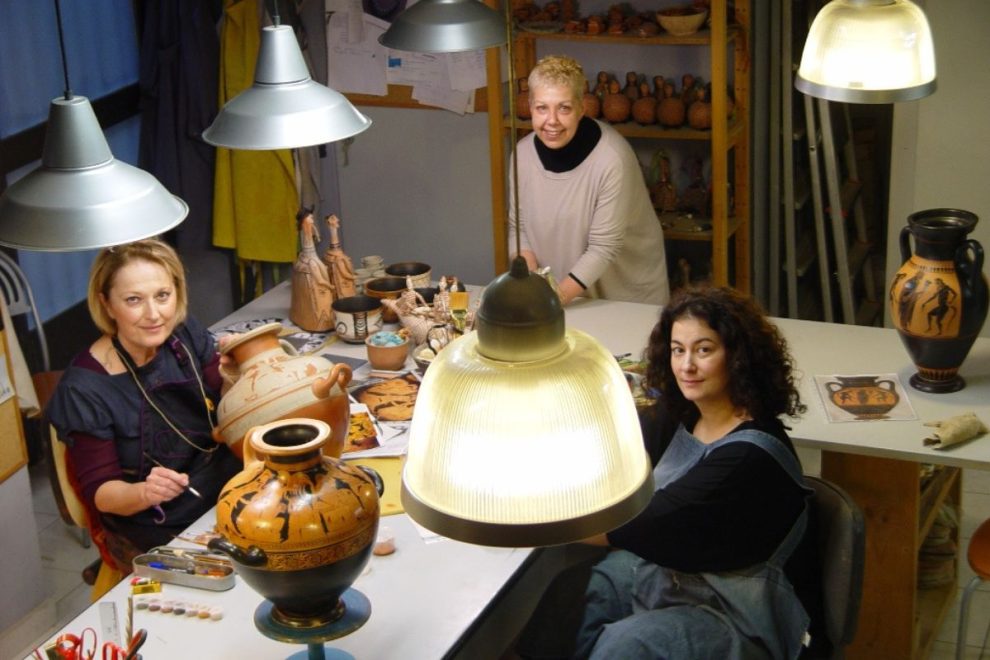
Identifying Authentic Attic Pottery
When you want to tell if attic pottery is real, you need to look for certain details that show it’s authentic. The way the clay feels and looks should be the same throughout the piece. You should also see careful designs and mythological themes, which were a big part of ancient Greek life. The vase shapes and how the painting has been done matter too. Pay attention to styles like the black figure and red figure methods. These can help you find out more about the pottery.
To really know if a piece is from ancient Greek times, you should also learn a bit about its history and where it came from. Knowing the story behind the pottery helps you tell if it is genuine. Books and other information from experts like John Boardman and Ingeborg Scheibler can help a lot. They give you useful advice about vase shapes, mythological themes, and other details you need to look for when you want to buy or study attic pottery. This is really important because the market is big, and there are many copies out there.
Distinguishing Features from Other Greek Wares
Looking at the special traits of attic pottery helps us see what makes it real compared to other Greek items. One big thing that stands out is the way people did vase painting. Many used both the black figure and red figure ways, which were common in Athens. The clay in these vases was often high quality. The strong black glaze on them also shows how skilled the Athenian makers were. Each shape, from the amphorae to the kylix, was made for a reason in ancient Greek life. These vessels look different from the ones you might find in places like Magna Graecia or the Black Sea area. All this gives us a better look into how people in ancient Greece lived and made things.
Techniques for Spotting Reproductions
You have to be careful when you want to tell if attic pottery is real or a fake. You should look at every part closely. There are some key things you can find, like real ancient Greek pottery usually has marks or names, and fakes do not have these. Pay attention to how the glaze and texture look on the pottery. True old pieces show small flaws because they are handmade. But fake ones often look the same all over. If you know about the history of certain vase styles, like the kylix or amphorae, you can spot what does not fit. That helps you know if it is made by modern hands. Keeping up with new studies of Greek pottery can also help you tell the difference between old and new. This way, you are more sure about what you find in the world of ancient Greek pottery.
Understanding Ancient Signatures and Attributions
Looking at the signatures and names found on attic pottery helps people learn about ancient Greek culture and about the work done by vase painters. These words on the pots can tell us who made them, what the artist’s style was, and how people used to work in the old days during the archaic and classical times. When people study these markings, they can figure out which pots are real and which are copies. This helps keep the history of the pottery safe. Also, these names can show us which workshop made the item. This gives us more about the trade paths and how people from the Mediterranean world shared their ways and items.
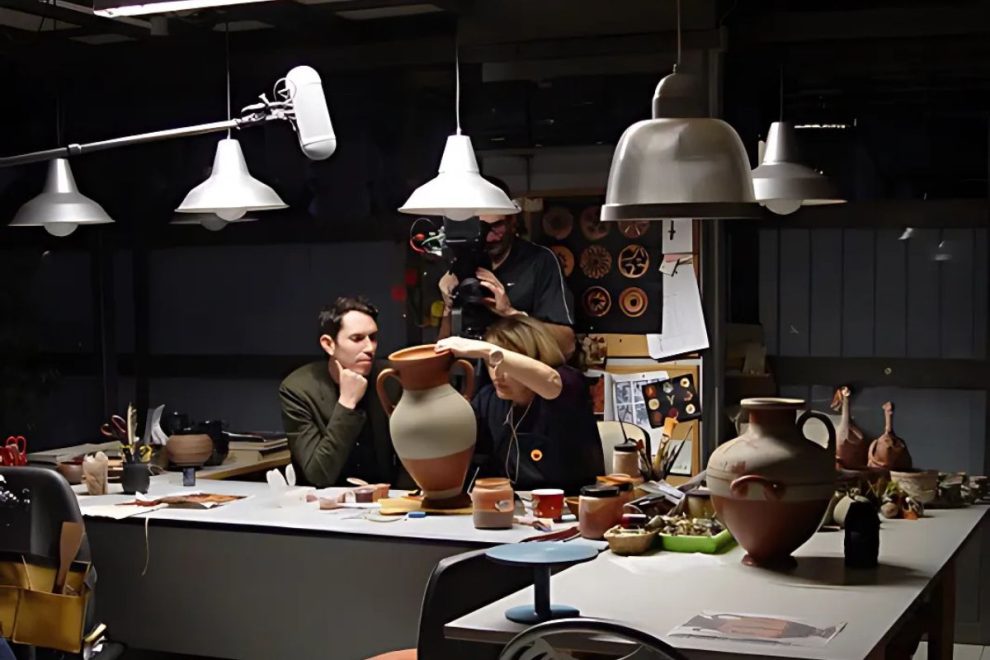
Iconography and Gender in Attic Pottery
Looking at the way pictures and symbols, or iconography, and gender work together in attic pottery shows us many layers of stories in ancient Greek art. There are often female figures in vase paintings. These women help us see what daily life might be like and what place women had in ancient Greece, especially during the classical period. Some pictures show women doing both private and public things. These scenes tell us there was more to their lives than just their home. At the same time, pictures of men focus more on being strong or winning at games. This shows clear roles for men and women in that time. Art like this tells us not only about daily life, but also lets us understand what people in ancient Greece thought was important, who had power, and how people saw each other. All together, this art paints a rich picture of culture and ways people lived during the classical period.
Female Figures in Attic Art
Female figures shown in attic art from the ancient Greek world tell us a lot about that time. These women often appear in scenes from old myths and show the many roles that women had. You can see goddesses and women going about their daily lives at home. Artists first used the black figure technique to create these pictures. Later on, they changed to the red figure style. This new way of painting made the images clearer and brought more life to them. The change in style happened between the 6th and 4th century BC. Through this artwork, we can see what people thought about women, gender roles, and what was expected of women in society during the 4th century and the rest of the ancient world. This gives us a good look at life in those early years.
Scenes of Domestic and Public Women’s Lives
Vases often show the different roles that women had in ancient Greek life. In pictures from the home, women are seen doing jobs around the house. This highlights how much they did for their families each day. In other scenes, women are shown out in public. Here, they take part in religious rituals or community events. This shows that women were also busy in the life of the group.
These scenes help us see the gender roles from the 5th centuries BC. When we look at such scenes, we get to know how people in the ancient world thought about men and women. These artworks not only show how women lived but also help us understand changes in beliefs about gender in ancient Greek times.
Comparison with Male Iconography
Female figures shown in attic pottery are very different from their male figures. Male images often show sport or fighting, but female images usually show daily life and home life. In many mythological themes, male heroes are the main focus. Female figures are mostly seen helping or caring for others. When you look at scenes with human figures doing rituals or house work, you can see how men and women were seen in ancient Greek society. These different ways of showing male and female roles help us see what values were important back then. They also show the many roles that women had in the ancient Greek world.

Preservation and Archaeological Discoveries
Big steps have been made to keep attic pottery safe, thanks to big finds at archaeological sites across Greece. Places where people dig, like Athens and Eleusis, give us a better look at daily life and rituals in ancient Greek times. These finds show the close tie between pottery and how people felt about their culture. When people study the shape and pictures on the pottery, they see not just what was in style, but also learn about the social and political side of life then. More finds, like those from shipwrecks and tombs, help people know more about trade paths and how regions mixed in the Mediterranean world. These new things show why attic pottery was so important for people living back then, even while those who try to keep it safe now still deal with many hard problems.
Major Excavation Sites in Greece
Many important excavation sites in Greece have helped us learn more about attic pottery and why it was special for ancient Greek people. The Agora of Athens is one of these sites. It shows us how people lived each day and what rituals they took part in by looking at the different ceramics found there. Some places, like the Sanctuary of Delphi, also show us how religion and vase painting came together. Other important places are the old city of Corinth, which was big in trade, and sites in southern Italy. These sites link to Magna Graecia and help us see how the Greek way of life spread. All of these finds help us see not only the skill used in making attic pottery, but also tell us more about ancient Greek daily life and the art and cultures of the time.
Findings from Shipwrecks and Burial Contexts
Shipwrecks and graves have revealed many pieces of attic pottery. This pottery gives us important information about the ancient Greek world. The way these items are kept safe in areas with very little oxygen helps them stay in perfect shape. Because of this, historians and archaeologists get a good look at how people in Athens made things and what their customs were. For example, vases found in tombs often show stories about myths. These stories let us know what people thought about life after death. Each discovery not only helps us learn more about Greek art and the beliefs in ancient Greece, but also shows the lively mix of daily life and customs across the mediterranean world. The powerful mix of mythological themes and everyday objects helps us see how people in the Greek world connected their regular day-to-day life with spiritual ideas.
Conservation Challenges and Successes
The conservation of attic pottery comes with its own set of problems and wins. It is not easy to keep these pieces from ancient Greece safe. The passage of time, weather, and human hands have all caused wear and tear. This has made it important to use new ways to fix and protect these items. Some of these methods include storing the pieces in rooms where the air and temperature are carefully watched, and using better ways to clean them.
Teams made up of museum staff and scientists who work with conservation have come together to care for these artifacts. By working together, they have managed to keep some of the most well-known attic vases in good condition. Thanks to these efforts, people can now, and will in the future, study and enjoy the details of attic vases. These vases show us how people lived in ancient Greek times and tell us a lot about ancient Greek life and ancient Greece.
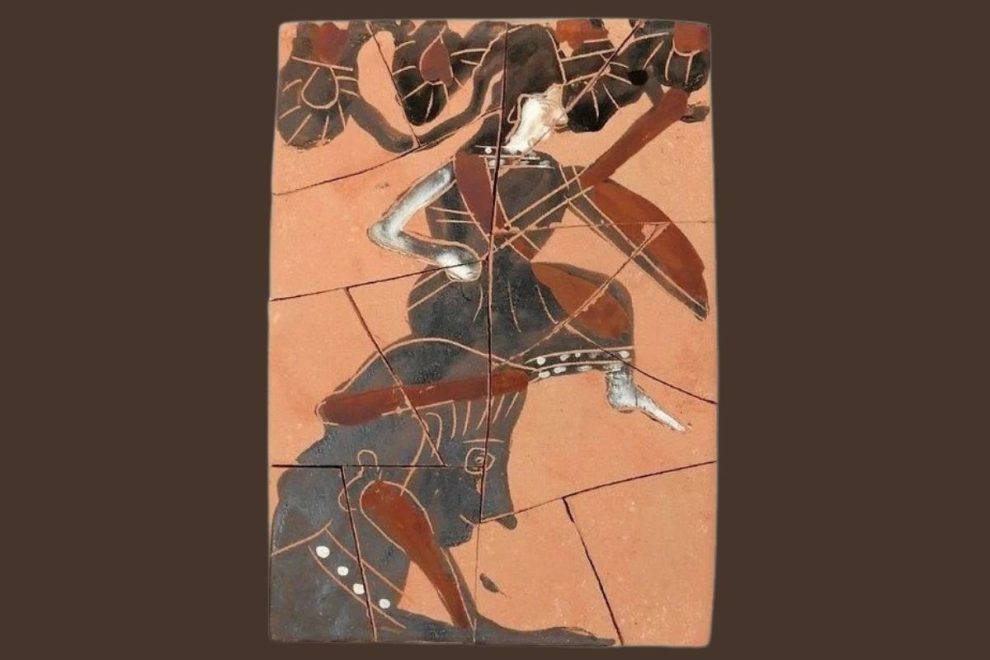
Types and Functions of Specific Attic Pottery Vessels
A wide range of Greek pottery vessels shows the artistic skills of ancient Greek culture. Each type had its own use in the daily life and ceremonies of people. Kylixes were used to drink wine during symposia. Amphorae were used as big containers to store things like olive oil and other goods. Hydriae helped people carry water, which was very important at home. Lekythoi kept oil used in funerals, showing the customs around death back then. Psykters held wine to keep it cool, showing how people mixed art and use together. All these different vessels help us see how the people in ancient Greek lived their daily life and took part in their ceremonies.
Playful or Non-Functional Uses of Attic Pottery Forms
Attic pottery is known for more than just daily use. It also shows off playful and fun styles in many forms. Some of these ceramics do not have a use in daily life and are made mainly for beauty. They often have bright mythological scenes painted on them. These ceramics were like luxury items. People liked them more for how they looked than for what they could do. Some pottery pieces look like toys or puzzles. Their job was to spark the mind and give people a chance to interact and play. Kids and adults both enjoyed them.
These art pieces do not always follow normal or practical shapes. This shows that attic vase painters from the archaic and classical periods liked to be creative and try new things. Their work lets us think about what daily life was like. It also helps us see the fun and playful side of Athenian life. Attic vase painters gave us a nice look at how people liked to enjoy beauty and have fun in that time.
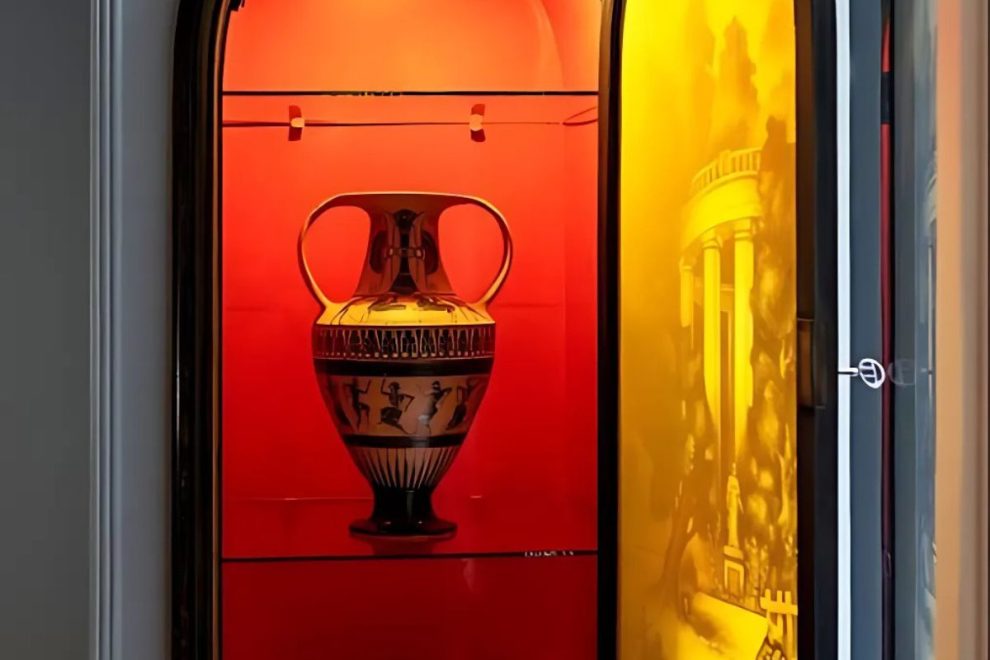
Viewing Attic Pottery Today
Many top museums in the world show the beauty of ancient Greek art. Some of the best pieces can be seen in New York and the British Museum. Online platforms now help people explore digital archives of Attic pottery. These sites let you look at the details of the designs and learn about their stories and meaning. Museums in Europe also display important works and show how vase painting has changed over time. If you are a collector, it is important to know the value of these pieces. There are more modern versions and custom products available now, too. People are still drawn to Attic pottery. It inspires new art, teaching kits, and collectibles. This keeps the love for this old craft alive, and people continue to enjoy and learn about it today.
Significant Museum Collections in the United States
Across the United States, there are many museums that have important collections of attic Greek pottery. These places help show the skill and culture of ancient Greece. In New York, the Metropolitan Museum of Art is famous for its large group of Athenian vases. People can see both black figure and red figure pottery here. Each piece helps us learn about mythological themes and daily life in ancient Greece. The Getty Museum in Los Angeles also has a good collection. You will find valuable attic black figure pottery at the Getty. These museums do more than just keep works of art safe. They also teach people about the history of Greek pottery and how it still matters today.
Opportunities to Explore Online Collections
Exploring online collections is a special way to see the history of ancient Greek ceramics. Attic pottery is a key part of this legacy. Many big places, like the British Museum and the New York Metropolitan Museum of Art, have put their collections online. Now you can look at high-quality images of vases and other pieces from your own home. Some websites also add tools that help you learn more about vase painting. There are virtual exhibitions that show how these objects fit in with ancient Greek life and art. This digital access helps people see why attic pottery is so important in the story of ancient Greece.
World-Renowned European Museums
Many top European museums show the best of ancient Greek art, especially Greek pottery. The British Museum and the Louvre have big collections with famous Athenian vases. This lets visitors see what attic vase painters could do. The Kunsthistorisches Museum in Vienna and the National Archaeological Museum in Athens also have amazing Greek pottery on display. These places help people notice the fine work in black figure and red figure styles. The collections help everyone understand more about the classical period of the Greek world. You learn about the daily life, mythological themes, and how cultures met back then. These ancient Greek vases are a good way to see how people lived and what they believed.
How to Evaluate the Value of Attic and Ancient Pottery Today
When you want to find out the value of attic or ancient pottery, you need to look at many things. The main things are where it came from, what shape it is in, and what is happening in the market at this time. Some pots are special because they are rare, made very well, or show important events in history. Features like rare vase shapes or a signed name from a well-known painter can make an item worth much more.
If you talk to auction houses or good galleries, you will get a better idea of how much people pay for such pottery now. It also helps to read about the history of Greek vases. Experts like John Boardman have done a lot of work in this area, and their studies give good insight for both collectors and people who study pottery. By knowing about these things, you can make better choices about what is worth buying or selling today.
Commercial and Collectible Aspects of Attic Pottery
Attic pottery has gone beyond its old beginnings and now has a strong place in today’s market. Many new artists and potters make special items by taking ideas from the detailed look and history that Athenian vases from ancient Greece offer. They sell these to people who like to collect or admire them. The charm of attic pottery comes from how it looks and how it is tied to the story of ancient Greece. Many people now love to collect these items from the ancient world, and auction houses often show rare pieces. This helps link the work from the past with what is sold in today’s world.
Attic Pottery-Inspired Modern Products and Educational Uses
Art from ancient Greek times still drives many new ideas today. You can see how attic vase painting shapes lots of modern things. Many toys and puzzles show scenes or patterns based on ancient Greek life. Kids play and learn about history at the same time. There is jewelry that uses the styles and famous images you find in attic vase painting. These pieces mix beauty with stories from the past. Even kits for learning use designs from ancient Greek art. This helps students dive into the old ways of making things. Because of all these new products, the story of attic pottery keeps going. It reaches more people and helps them enjoy and understand ancient Greek culture and vase painting.
Attic pottery gives us a close look at ancient Greek life and daily life. People did not just use these items for holding things. They also made them into works of art. These pieces show what people in Athens cared about and what they believed in through many years. When we find attic pottery, we learn more about how people in the Mediterranean world worked together and traded things. Looking at these ancient works of art helps us see how Greek pottery shaped history. It also shows us why people still value it today, both for its looks and its place in history.

